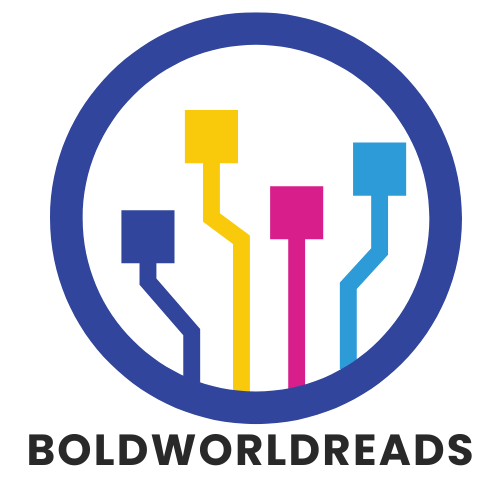In a world where AI can whip up essays, poems, and even love letters faster than you can say “artificial intelligence,” the question arises: how can anyone tell if someone’s been chatting with ChatGPT? It’s like trying to spot a unicorn in a field of horses—tricky, but not impossible.
Table of Contents
ToggleUnderstanding ChatGPT
ChatGPT is an advanced language model developed by OpenAI. This model generates human-like text through extensive training on diverse datasets. Its capability to mimic human writing makes it challenging to identify AI-generated content.
A distinctive feature of ChatGPT lies in its ability to produce coherent responses across various topics. Users often notice that the writing style features structured sentences, consistent tone, and logical flow. Even subtle nuances can betray its origin, such as repetitive phrasing or overly formal language.
Detection involves examining specific indicators. Writers may include overly generic answers or lack of personalization in their content. AI-generated text often feels impersonal, reflecting common phrases instead of unique insights.
Understanding the context is vital. When analyzing a piece, variations in depth, originality, and emotion provide clues to its source. Human writers typically incorporate personal anecdotes or nuanced perspectives; ChatGPT does not, as it lacks genuine experiences.
Another aspect to consider relates to the text’s complexity. Patterns may emerge in longer passages, especially when the subject matter becomes intricate. AI might struggle with maintaining context or delivering depth consistently, indicating potential generation by a model like ChatGPT.
Moreover, tools exist that help detect AI-written content. Some programs analyze linguistic patterns and compare texts against a database of known AI-generated writings. These tools provide additional support for those looking to discern the authorship of specific pieces.
Awareness of these factors equips readers better to navigate the evolving landscape of AI-generated content. Understanding how ChatGPT operates enhances the ability to identify its distinct characteristics.
Identifying ChatGPT Usage

Recognizing signs of ChatGPT usage proves challenging. Several indicators help in this identification process.
Analyzing Writing Style
Assessing writing style reveals much about authorship. AI-generated text often exhibits a formal tone. Writers utilizing ChatGPT may produce content that lacks emotional depth. Specific figures are omitted, making arguments less compelling. Personalized anecdotes frequently appear absent, suggesting a disconnect with the reader. Many times, a uniformity in sentence structure emerges, leading to a monotonous reading experience. Recognizing these characteristics may signal the presence of AI involvement.
Detecting Repetitive Patterns
Repetitive patterns can betray AI-generated writing. Text produced by ChatGPT may include similar phrases and structures throughout. Such redundancy contrasts with human creators, who typically vary their expressions. In longer texts, these patterns can become particularly pronounced. AI might rely on specific language constructs, making identification easier. Readers should be on alert for unnatural repetitions that seem out of place. Observing these elements can provide crucial clues regarding the originality of the content.
Tools and Techniques for Detection
Identifying AI-generated content requires a combination of specialized tools and thoughtful analysis. Various techniques exist to enhance detection accuracy and yield clearer insights.
Automated Detection Software
Automated detection software plays a crucial role in distinguishing AI-generated text from human writing. These tools analyze linguistic patterns, sentence structures, and unique markers associated with AI models like ChatGPT. For example, platforms such as GPT-2 Output Detector and Turnitin utilize advanced algorithms to compare inputted text against known datasets. These comparisons help identify likely AI origin, especially when evaluated across extensive bodies of content. Outputs often signal specific characteristics of AI writing, enabling users to detect patterns indicative of machine-generated content.
Manual Review Methods
Manual review methods supplement automated tools and enhance detection capabilities. Readers should look for signs such as a formal tone and lack of personal anecdotes. AI text often lacks emotional depth, making it appear less engaging. Evaluating sentence structure also proves insightful; repetitive patterns or uniformity in phrasing may indicate AI involvement. Comparing the writing style against known human author characteristics can further aid detection. Using these guidelines, meticulous examination of content reveals deeper nuances that automated tools may miss.
Implications of ChatGPT Usage
ChatGPT’s usage presents several implications for communication and content creation. The rise of AI-generated text affects how individuals perceive authenticity in writing. Many readers may question the credibility of information when they suspect AI involvement.
Detection of AI-generated content often hinges on specific characteristics. Uniformity in style characterizes many ChatGPT outputs, leading to potential reader disengagement. Emotional depth frequently lacks in AI-generated responses, making them less relatable.
Consequently, reliance on automated tools increases. Platforms like GPT-2 Output Detector and Turnitin provide valuable resources for those discerning AI language patterns. Analysis of linguistic features can reveal clues indicating AI authorship. These tools assess sentence structure and other nuances, helping users differentiate human writing from AI outputs.
Writers face challenges in maintaining originality amid AI advancements. Human authors typically bring personal experience and emotion to their work, elements that AI-generated content often misses. Varied expressions enhance engagement, which repetitive AI phrases cannot achieve.
In educational contexts, implications become particularly significant. Students may resort to AI for assistance, raising concerns about academic integrity. Educators need strategies to identify AI usage in student submissions, promoting honest and authentic learning experiences.
Ultimately, awareness of ChatGPT’s capabilities and limitations fosters critical evaluation of written content. As AI-generated text becomes increasingly prevalent, understanding its hallmarks aids readers in appreciating the nuances of human versus machine-made writing.
Recognizing AI-generated content like that from ChatGPT requires a keen eye for specific indicators. By understanding the characteristics of AI writing—such as a formal tone and repetitive patterns—readers can better assess the authenticity of a piece. The blend of automated detection tools and careful manual review equips individuals to navigate the complexities of modern communication.
As AI continues to evolve, maintaining an awareness of its capabilities and limitations is essential. This awareness not only enhances critical evaluation skills but also fosters a deeper appreciation for the unique qualities that human authors bring to their work. In a world increasingly influenced by AI, distinguishing between human and machine-made text is more important than ever.



